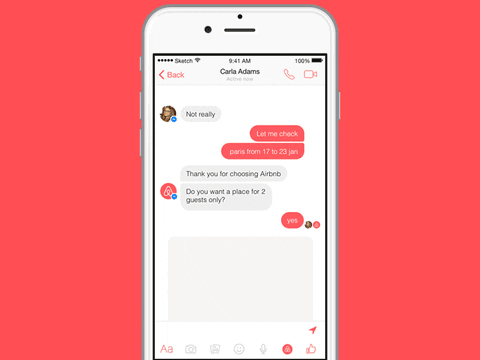Updated: January 24, 2024- 7 min read
Failure is far from the endgame. It’s a tough lesson to learn. Picking yourself and your team up from the floor when you’ve had a major setback isn’t easy! But it’s a lesson that many companies have to learn, including some of the biggest names today.
Time and time again, we see untouchable companies launch a product or add a feature that seems to spell disaster! Sometimes, through no fault of their own, they are felled by market trends. Technology overtakes them, and they slowly fade from memory. (Please picture a montage of company logos set to Elton John’s ‘Candle in the Wind.’)
But what about the failures that…worked? Failures that turned a company on its head and ended up revolutionizing tech as we know it? And what about the products that seemed doomed to fail, but triumphed against all odds? Sometimes failure leads to great success.
Let’s take a closer look.
1. Airbnb: People didn’t get it, and New York didn’t want it
Everyone has heard of Airbnb by now. And while it’s true that the company faces a few problems, they just keep on going!
Back in 2008, when Airbnb started, they really struggled to find investors. No one really understood how the business model worked. On top of that, no one thought that strangers would want to rent their homes out to other strangers.

One of the biggest blows in the company’s history came when New York City made Airbnb-type rentals illegal. Everyone was turning around to CEO, Brian Chesky and telling him to his face that it was a bad idea. In an interview with The Atlantic, Chesky said;
There was a designer in LA who I looked up to. And I remember telling him about the idea. And he said something I’ll never forget. He said: “Brian, I hope that’s not the only thing you’re working on.”
Eleven years later, what’s happening with Airbnb?
Well for starters it’s hailed as one of the major players in starting The Sharing Economy of the 2010’s, it has 150 million users, and is currently worth about $35B.
Not bad, some would say.
2. Reddit: No one knew it was there
The story of Reddit’s success is a real ‘fake it till you make it’ story.
When Reddit launched in 2005, it had zero visitors. That’s right. ZERO.
We all know that a product without users is nothing, however the team behind Reddit weren’t about to give up.
While many would panic, the Reddit team decided that if people weren’t using their platform, they’d have to use it themselves.
They created fake accounts and started fake discussions and forums. To an outsider, it would appear that people were using the platform, and they started to take interest.
Now, Reddit is one of the major tastemakers of the internet. It’s also one of the biggest sources of memes which everyone knows the internet is very fond of. While it’s hard to know how many daily active users the platform has, estimates place the number around 1.5B in late 2019.
(PS, we have an awesome subreddit for Product Managers if you’d like to join us over there too!)
3. Nintendo: NES triumphs in a failing market
For so many of us, Nintendo is synonymous with childhood. But in the 1980s, the gaming industry was going through some seriously tough times…to say the least.
The video game crash of 1983 has its own Wikipedia page, that’s how bad it was. The market was flooded with too many consoles and games to choose from, and gaming giant Atari suffered a huge, very public flop. 1983’s E.T The Video Game is widely considered to be the worst of all time.
So when Nintendo tried to bring their new console, the NES, to America, they were faced with a huge challenge. Although it had sold very well in Japan, Nintendo’s smaller sister company Nintendo of America was just not convinced. Competitor consoles had achieved massive sales. And then crashed and burned.
By all accounts, the market just was not ready for another console. But President Hiroshi Yamauchi believed in the NES, and told his US executives to go ahead with a New York City launch.
The problem wasn’t that shoppers didn’t want to buy, the problem was that retailers didn’t want to stock. No one had any faith in anything to do with videogames.
Nintendo soldiered on, knowing that to succeed they had to make some changes. They moved away from all things ‘videogame’ in their marketing, and focused on two accessories: a robot and a Zapper light gun for the popular Duck Hunt.
You might also be interested in: Being a Product Manger in the Games Industry
Nintendo America head Minoru Arakawa also made a secret deal with retailers, including a buy-back scheme for unsold stock, making the NES a no-risk investment.
If this were a fairytale, we’d be able to tell you that NES was a HUGE SUCCESS and sold billions of copies. But that’s not quite the case. Nintendo sold around 50,000 consoles. Not a large number at all, but it was just enough to convince Nintendo that the American market was worth investing in.
Today, Nintendo’s latest console, the Switch, has been bought 15 million times in North America alone.
4. Netflix: The year that wasn’t so chill
It takes a royal mistake to make it to Saturday Night Live, but that’s exactly what happened to Netflix in 2011.
Netflix, which was growing pretty nicely in the mid-to-late 2000s, decided to split itself in two. They split their $10 offering into an $8 streaming plan, and an $8 mailed DVD plans. What this did was essentially increase the price 60% for users who wanted to keep both.
A nearly fatal mistake.
What Netflix had failed to understand was how important their relationships with their customer base were. Once you’ve angered your users with such a price hike, it’s hard to keep them around. Especially when competitor services were both gaining popularity and offering a lower price point.
To fix the problem, Netflix had to become obsessed with its customers and listen to what they wanted. They used their extensive amounts of data to inform creative decisions, leading to a powerhouse of Oscar-winning original content.
You can hear more about how Netflix turned itself around to become the world’s favorite streaming service straight from the horse’s mouth. Check out this talk from former VP of Product, Gibson Biddle, at #ProductCon Seattle in 2019:
5. Blogger: Down to the last man
If you were a creative teenager in the early 2000s, you’ll recognize Blogger!
Blogger started as a side project of Pyra Labs, which was co-founded by Twitter co-founder Evan Williams. Williams’ goal was to create a place where anyone could write about their interests for free.
Blogging was a relatively new concept in 1999, so Blogger was able to capitalize on the novelty and become the blogging platform. However, the business model made it difficult to pay employee wages.
People started to leave, until Williams was the last employee of his company.
While some would give up, he knew that Blogger simply had to start generating revenue to survive. He was able to secure funding, launched a paid version called Blogger Pro, and introduced ads to the free version.
Blogger soldiered on, until it was sold to Google. Today there are over 1 million blogs live on the site.
What to Do When Failure Calls
There’s hardly a company around today that hasn’t survived some kind of near-miss. What does this teach us as Product Managers?
That failure is not the end of the road, even if it seems like it.
Failure is just a sign of what you’ve been doing wrong, whether that be spreading your resources too thin, not listening to your customers, or not finding your Product-Market fit.
What’s most important to remember, is that even if this product fails (it happens!) that’s not the end for you. Plenty more products to be managed and jobs to be done.
Updated: January 24, 2024





